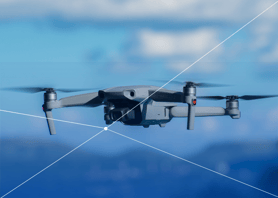Posted by:
invenioLSI
Publish Date:
15 Nov, 2022
Since the pandemic, the UK public sector has seen a dramatic change in embracing the digital revolution. While UK policing has been slower than the rest, resistance has significantly reduced thanks to many factors, including the exponential rise in cybercrimes during national lockdowns.
In 2020, according to TechMarketView, the UK Police Software and IT Services (SITS) market grew by 6% year-on-year. The spend on legacy SITS retained most of the allotment (68%), while the new SITS which includes digital, platform, cloud, and cyber grew around 25%. So, what are some of the factors driving rapid digitisation?
.png?width=288&name=Copy%20of%20Employee%20Spotlight%20Quote%205%20(1).png) Cybercrime
Cybercrime
Telephone-operated Crime Survey for England and Wales (TCSEW) reported a rise in total crime, largely due to fraud and computer misuse for year ending June 2021. Excluding fraud and computer misuse data revealed a 14% decrease in other crimes, with the drop attributed to pandemic lockdowns. However, surging cybercrimes more than offset this reduction.
The report stated a 32% increase in fraud incidents and an 85% increase in computer misuse incidents. Cybercriminals have sharpened their skills. The need for cybersecurity, digital investigations, and evidence management is growing.
Over five years, the UK government has invested £195m into a specialist cyber law enforcement network to combat cybercrime. This includes launching the Cyber Resilience Centres, the National Economic Crime Victim Care Unit (NECVCU) scheme, and the NCSC's Active Cyber Defence programme.
Digital forensics
With the rise of online crime, authorities face fragmentation issues and systems can't cope. Additionally, most data resides in silos, so there's an urgent need to collate information under one umbrella to increase productivity.
.png?width=317&name=Copy%20of%20Employee%20Spotlight%20Quote%205%20(2).png)
In 2020, the Forensic Capability Network (FCN) was established under The National Police Chiefs Council's (NPCC) Transforming Forensics programme. The cloud-based platform for forensics (FCN Xchange) gives members access to new tools, including digital fingerprint capabilities.
An area of dispute in adopting digital forensics is security, given the sensitivity of the information. The UK parliament is going through the Police, Crime, Sentencing and Courts Bill to address this. If passed, police forces can obtain digital evidence, with data to ensure only information relevant to the investigation is available.
Emerging technologies geared towards policing
UK policing is proceeding with caution when it comes to embracing new technologies, due to concerns around sensitive data. Some key areas of digital innovation include:
 Facial recognition compares live camera feed to the existing watchlist, leading police to be cautious while using this technology. However, tools like Retrospective Facial Recognition (RFR) and Operator Initiated Facial Recognition (OIFR) are garnering growing interest from their effectiveness in catching criminals.
Facial recognition compares live camera feed to the existing watchlist, leading police to be cautious while using this technology. However, tools like Retrospective Facial Recognition (RFR) and Operator Initiated Facial Recognition (OIFR) are garnering growing interest from their effectiveness in catching criminals.
Predictive policing tools use analytics to identify crime hotspots and high-risk areas. But the accuracy, effectiveness, and ethics of such tools have come into question and will only be accepted if the algorithms are sound, transparent, and explainable.
Drones are increasingly relied on by UK policing for finding missing people, tracking criminals, monitoring protests and crowd control, and more. The units are usually fitted with infrared cameras, LiDAR, smart tracking, loudspeakers, and spotlights. Drones are easier, faster, and cheaper to operate.
Virtual reality (VR) - from training officers in realistic setting to exploring crime scenes - is proving its worth in policing. VR technology can aid investigations, intelligence, monitoring road traffic collisions, and familiarising locations before operations.
It's clear that despite some reservations, policing will continue to explore and benefit significantly from adopting advanced technologies. At invenioLSI, we help the public sector gain accurate insight for faster and smarter decision-making.